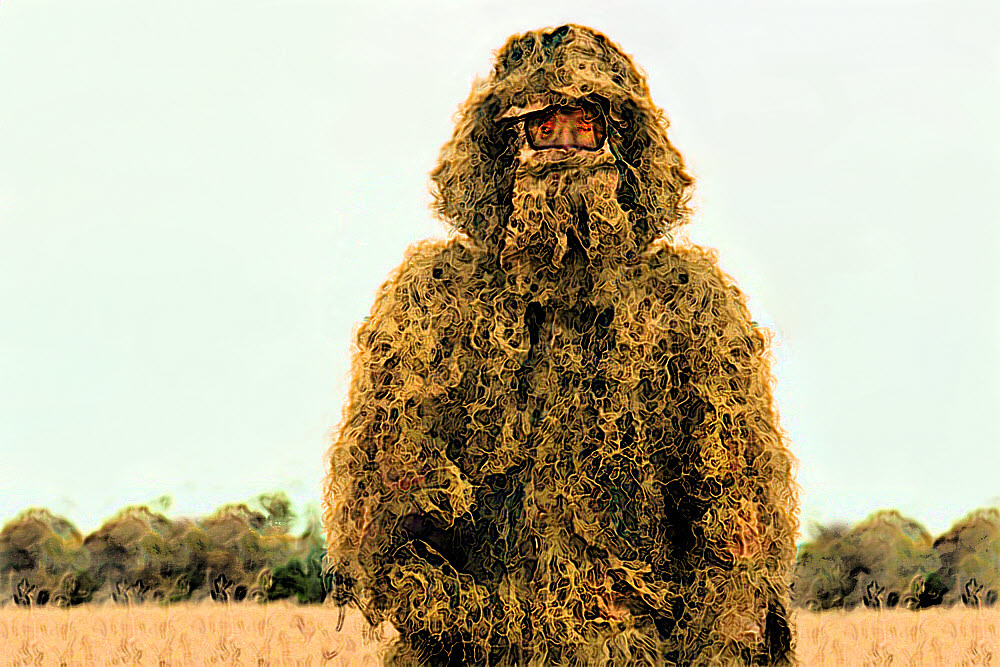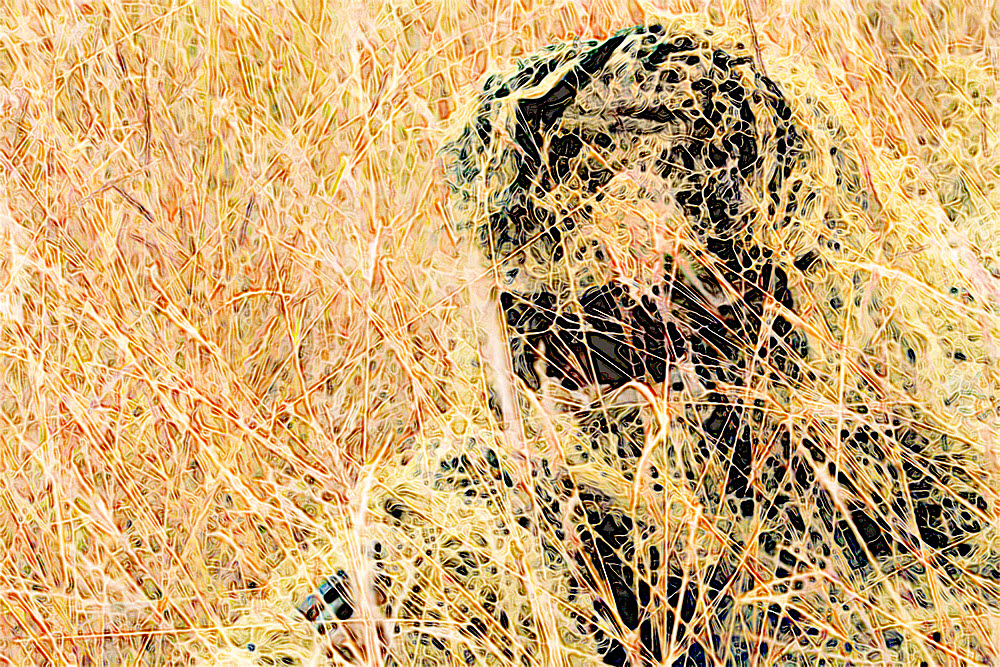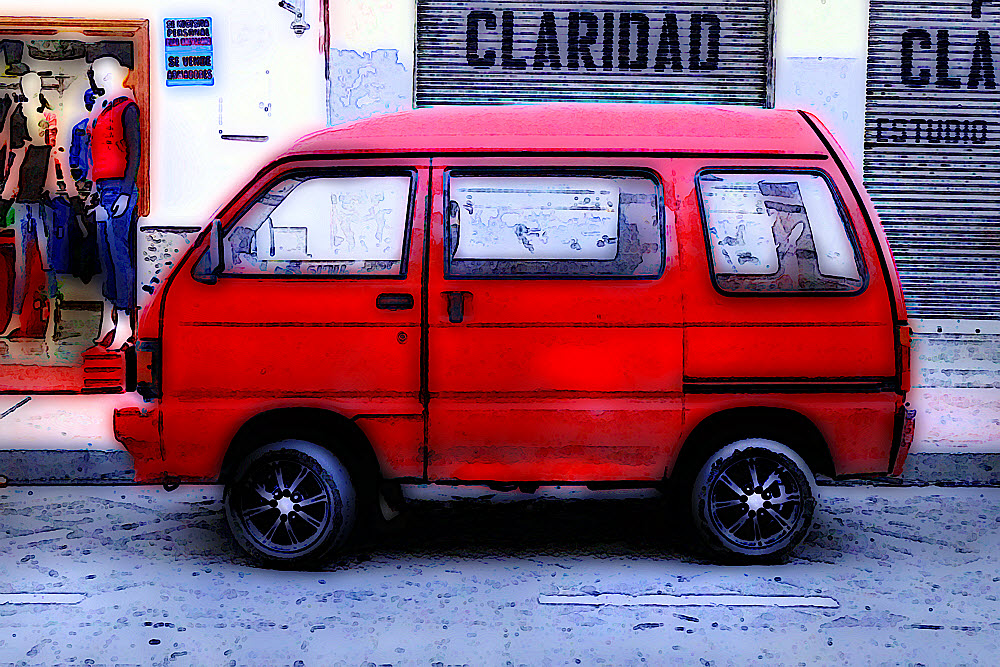
You get itchy, sitting, with nothing going on, even in paradise.
No matter what happened last time, I eventually start thinking about next time. It's the same old endless Doofus Cycle.
Some people look for love in all the wrong places, over and over. Some quit one job and look for another, just like the old one. I make my own false moves in my own way, because of not having a tether, an anchor, at least one confidant, any circle of friends, or so I think. Could be I'm just a dickhead.
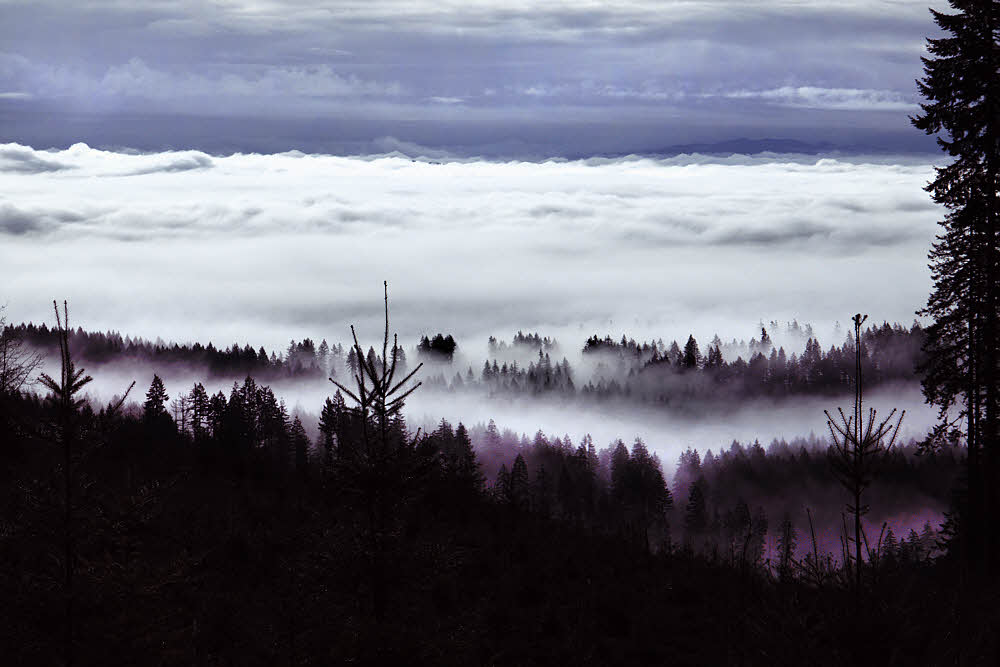
Morning, April 2, 2018.
With great hopes and vague plans I set off at the end of February last year to really get down and serious about doing some real backpacking while I was still able and had the ambition, and almost immediately went down in flames. I bought a great little vehicle. It was almost completely the wrong one, but still fine, truly fine, for what it was. I spent hundreds on new equipment, a lot of which did not get used, or only used once. I sewed up a new backpack of my own personal design. I thought about where I would go, and when, but made no intelligent plans, and then settled in to wait out the early-season weather until I could actually start backpacking.
Meanwhile the weather decided to outwait me.
It won. I lost.
Winter in western Washington can be nice. Especially if you're from North Dakota. My first winter, spent living in Port Angeles, and working in Sequim, was choice. It was the year of the winter without a winter.
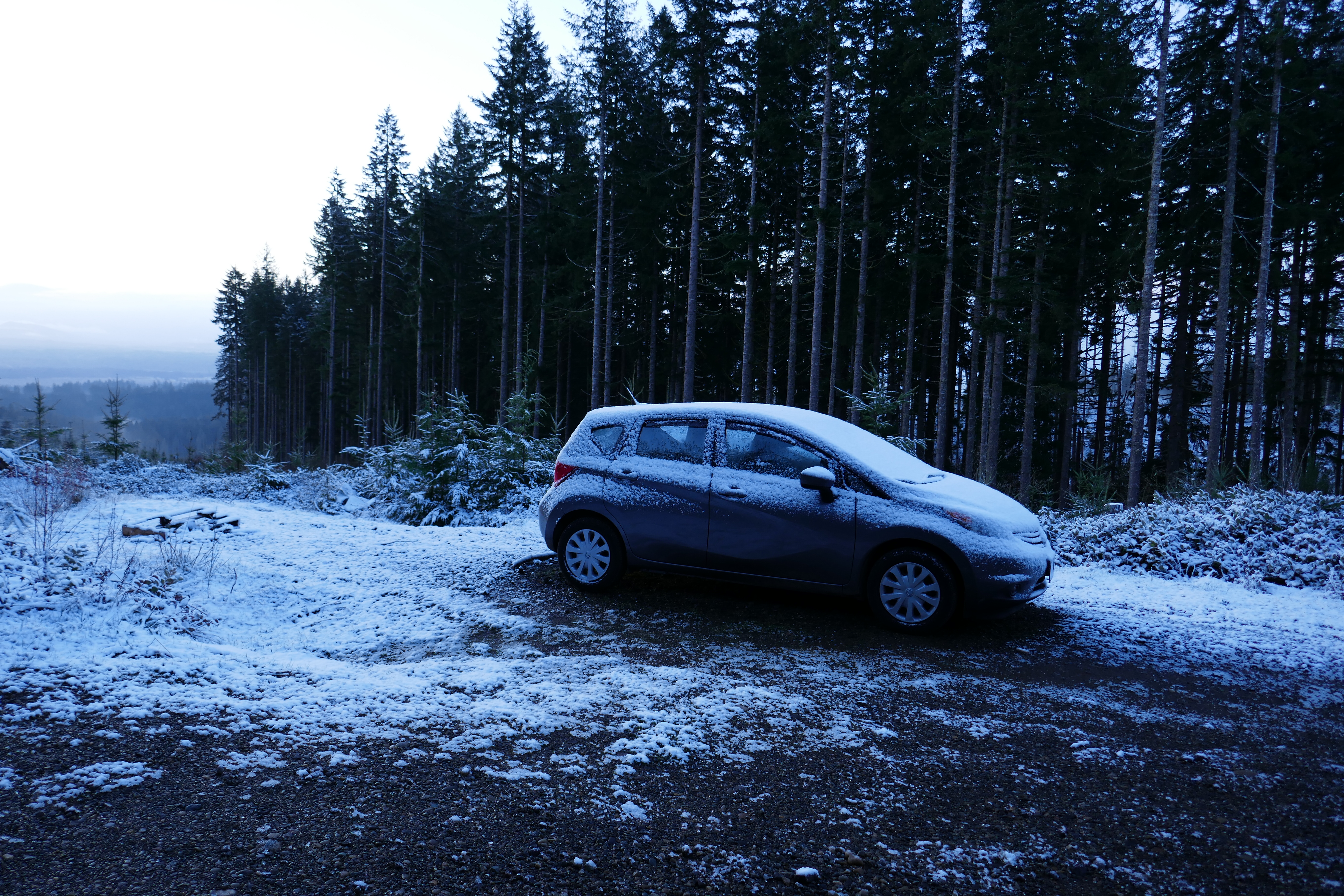
Bedroom in the bush, April 2, 2018.
I'd finally finished a college degree, but ended up working in a lumber yard my last winter in North Dakota. Coldest day, in February, -35°F in the morning, with a high of -7°F around 2 p.m. (-37/-22°C) In the spring I took off, driving through most of the western states and ended up close to some people I knew who had already moved from The Land Of The Frozen Dead to the Port Angeles/Sequim area, and there I was, working in another lumber yard. Not a great job but it was enough.
And winter never came that year.
And if you have a place there, in western Washington, a fixed home of some kind, and want to get out, you can hike all year if you keep your expectations and altitude on the low side. There's snow higher, but in the lowlands are quite a few days with little rain, or light rain, and it's never too cold. I liked that. I used to hike all year when I lived in Washington, but it isn't the same if your home is a vehicle. Without a real home things are radically more uncomfortable.
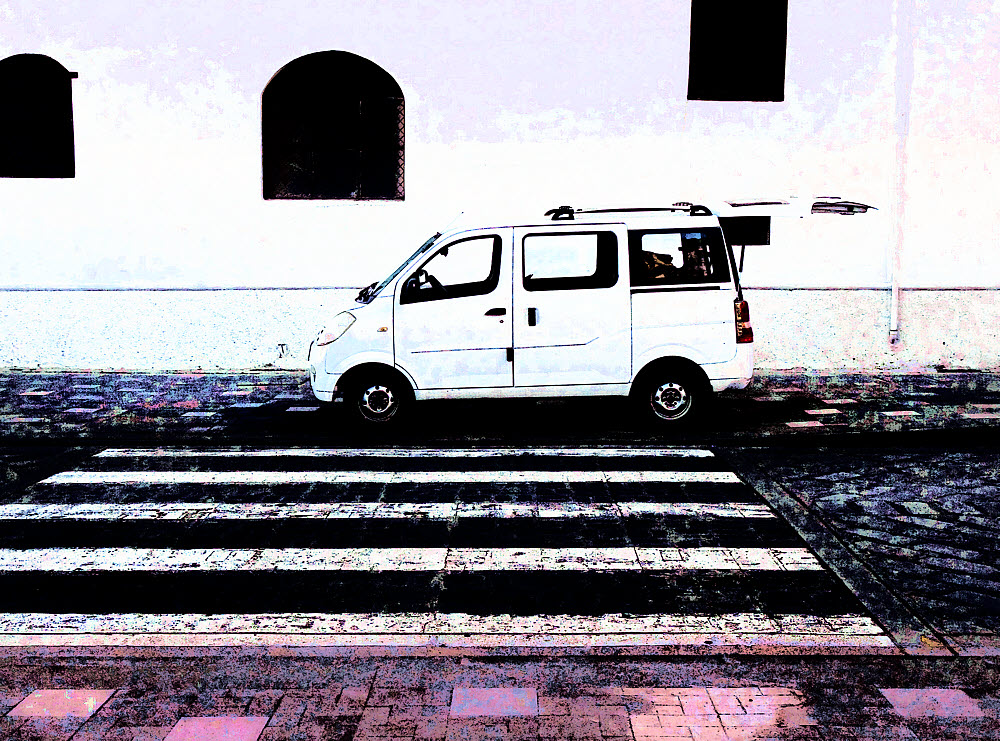
So last year I got back there early. Early enough to have a huge selection of used vehicles, and I bought one. Then I was living in it, spending my days at the library and listening to rain hammer the car all night. March of last year was heavy with rain. April was worse. April set a record. It was engaging for a while. Fun. But...
I had been waiting for this chance to get back north and was willing to wait out the parts of the early season that needed waiting out. But...
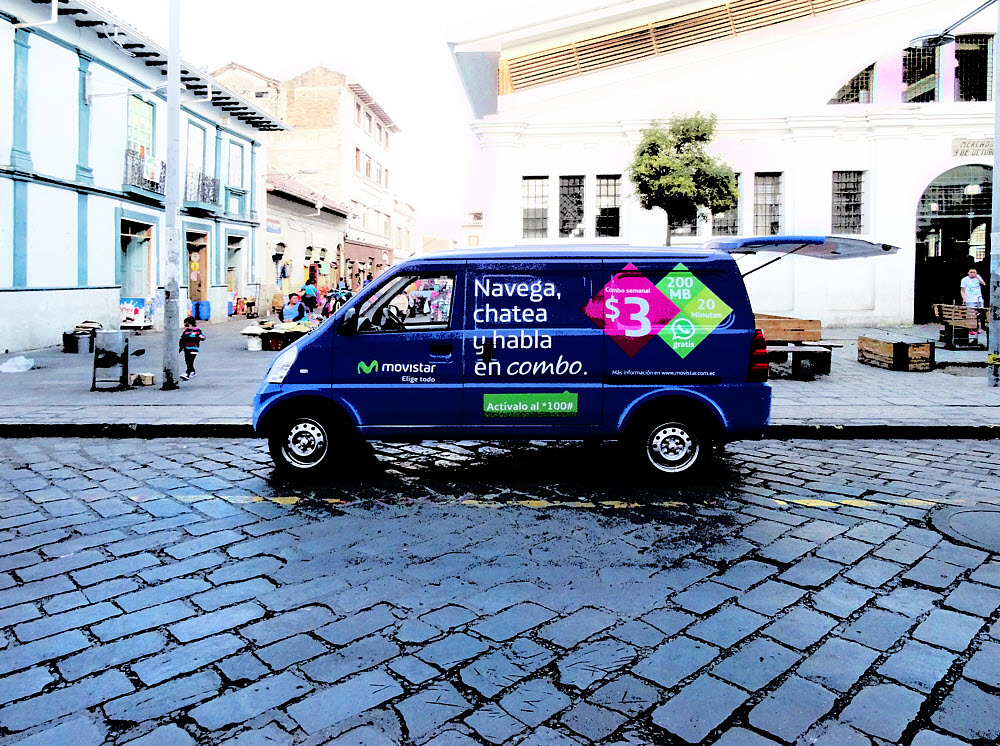
I'd been in Ecuador sitting on my thumbs for quite a while. You apply for residency and even when the process is over you still have two years to go before it's finally finally over. You can be out of the country for a few days but not too long. After those first two years are up, a sort of probationary period, then you can leave for up to five years at a stretch, and not blow yourself out of the water. So in 2016 I was back in the U.S. for the summer, using up my "free" time, driving around and doing some fun backpacking, but was careful to be back in Cuenca within 85 days, leaving a five-day cushion in case of problems. That worked.
Fifteen months later, after lazing around, at the end of February, 2018, I was clear. My two years were done.
That brought me to 2018's spring.
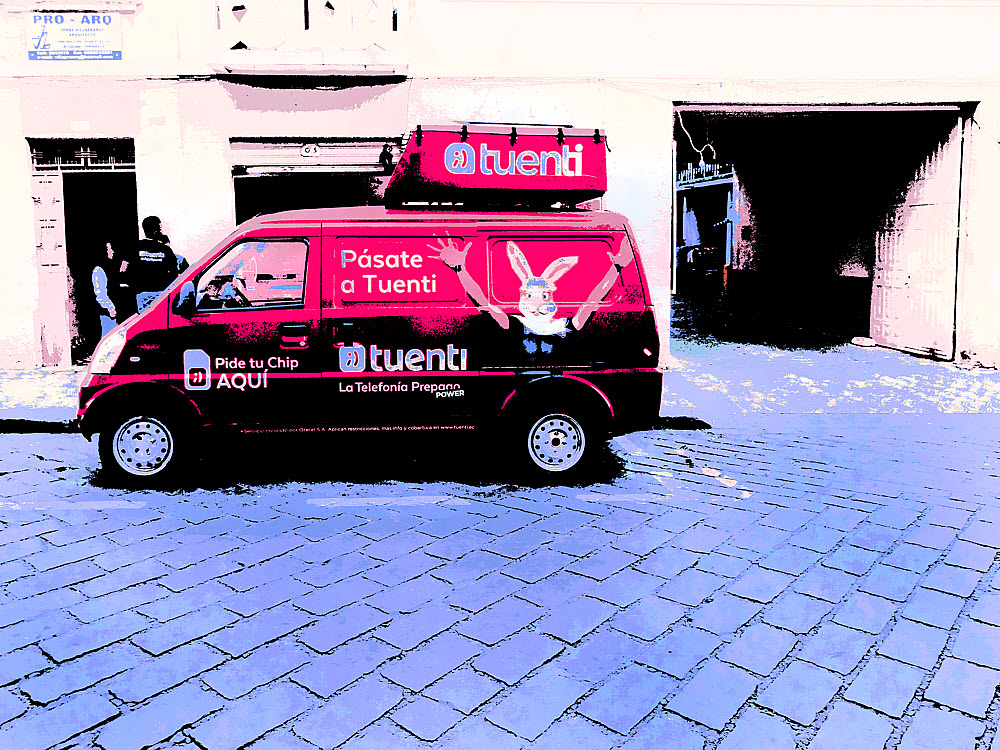
Though March and April of 2018 were almost all rain in western Washington, May was not. May had only a few sprinkles to share with us, and was even a bit too warm — dry, dusty, warm. I drove into eastern Washington that month, to do some exploring while waiting for winter snows to begin melting away from the trails, but the weather in eastern Washington was even hotter. It was a disappointment. I'd effed up again. Every place I went was stifling and buggy. Living in the car I had no privacy and needed to drive many long miles from anywhere just to find enough privacy to sleep.
After a couple of weeks I gave up and was back in western Washington. The ocean sounded good — why not? I'd go backpacking along the coast, the way I used to do every long Thanksgiving weekend. I'd always loved it.
Even that was hot, and annoying. I was carrying a new, extremely expensive bear canister and discovered several new ways to hate something. After only one night the trip seemed pointless, so I gave up. Summer on the beach is different from winter on the beach. It's only summer, there is no mystery and little solitude with other people tromping through every few hours. Not my kind of experience. Well, meh.
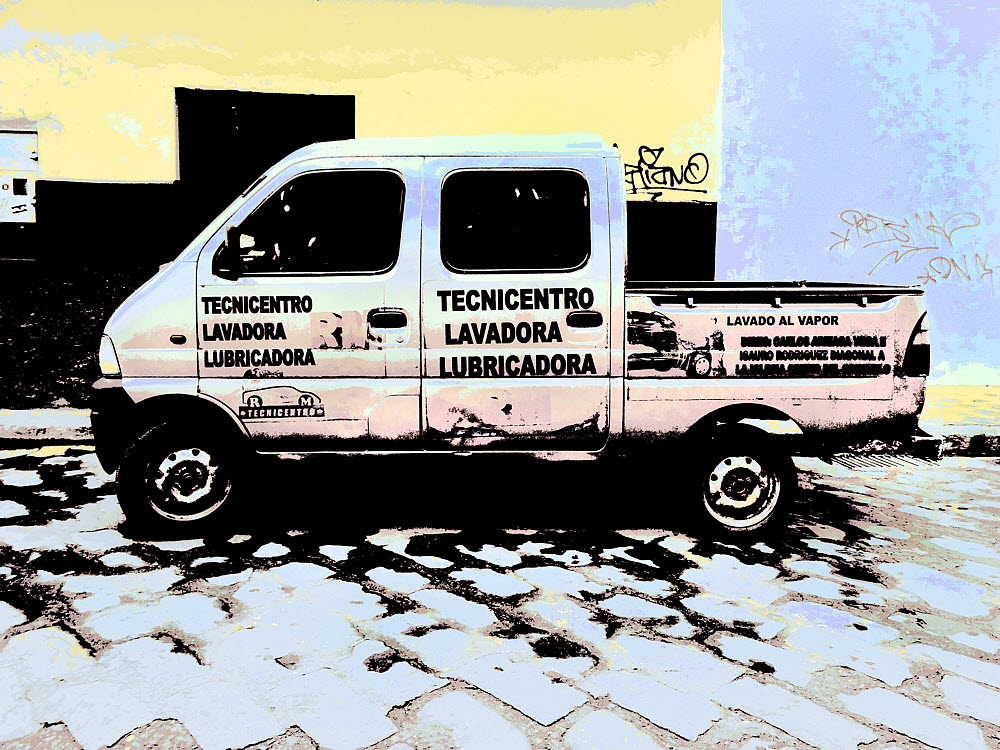
I kept most of my things stored in a rented place, a four-foot by five-foot space. Even with plastic tubs to organize it all there wasn't enough room, and stuffing everything into tubs meant that I couldn't find anything. Any search took hours of digging for even a short outing, and since the car was too small for all of my things, I was permanently tethered to the locker.
Major failure point.
Well, there were other places to go. I decided on Hells Canyon before the weather turned terminally hot for the season.
Prepared. Bagged food, found a sad but possibly usable map, sorted the equipment, filled up on consumables, drove two days to get there, slept in the car, and woke to rain. After two hours of walking the parking lot in circles, debating the plus-minus of it all I got into the car and drove back west. Just gave up. Could not face it. Didn't know exactly why. Still don't.
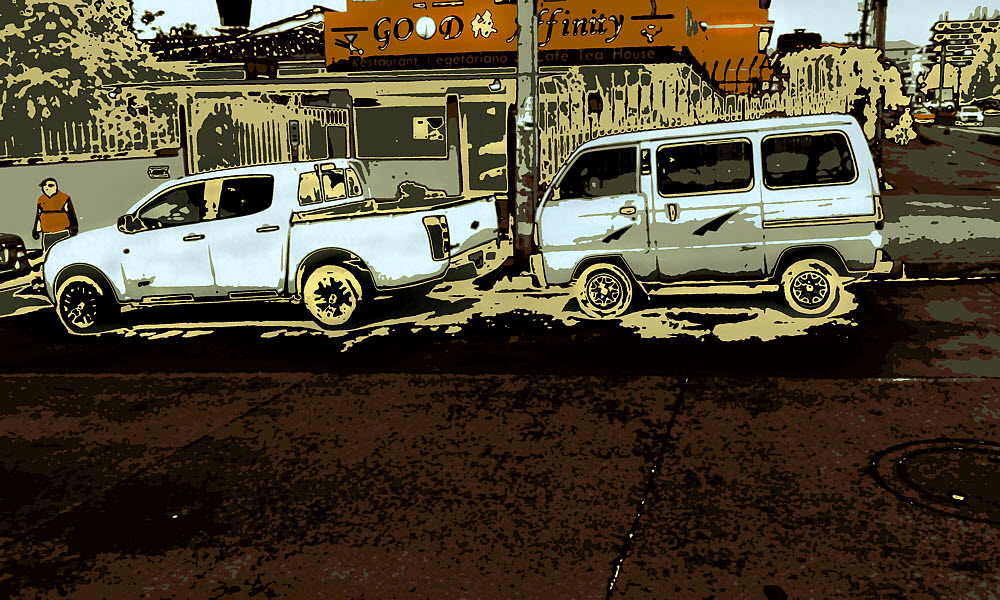
It's different if you have friends or relatives, if you're in a group, if you have a home and a job and you're out there for your only two weeks off all year. But after you are cut loose and have no connections any more, even if you have enough money to squeak by on, and know what you're up to, a lot of times you still make silly choices, wrong choices, too many decisions that add up to nonsense and there's no one act as a governor. You're an engine without a flywheel — either stalled out or screaming to self-destruction.
You pace in circles inside your own mind. If you're alone all the time, any crazy idea can seem rational whenever it happens to scampers across your consciousness, so it was easy to tell myself that by far the best thing to do was to quit, give up on Hells Canyon, face west, and drive those 475 highway miles all over again without even spending a single night on the trail.
So there I was once more, stymied, spending days at the library and nights parked in Capitol Forest and not doing a damn thing.

But my pack worked. Yeah. The one I made. I'll have to see if I have enough information to post plans for it. They should be shared. If I was half as old as I am, I might try the backpacking equipment business. I have some ideas, but things are too far along now, with both me and the industry.
In 2002 I attended my first ALDHA-West Gathering. Heard Brian Robinson talk about his "calendar triple crown" thru-hike. Met Ron Moak and Henry Shires.
Brian Frankle was there too, founder of Ultralight Adventure Equipment, the first person to hike the Hayduke route. Neither Shires nor Moak was in business yet, but along with everyone else who wanted to pay attention, I got a chance to listen, and talk to them, and learn things, round up some ideas, and saw the the first Tarptent prototype either that year or the next when Henry Shires brought it along to show off.
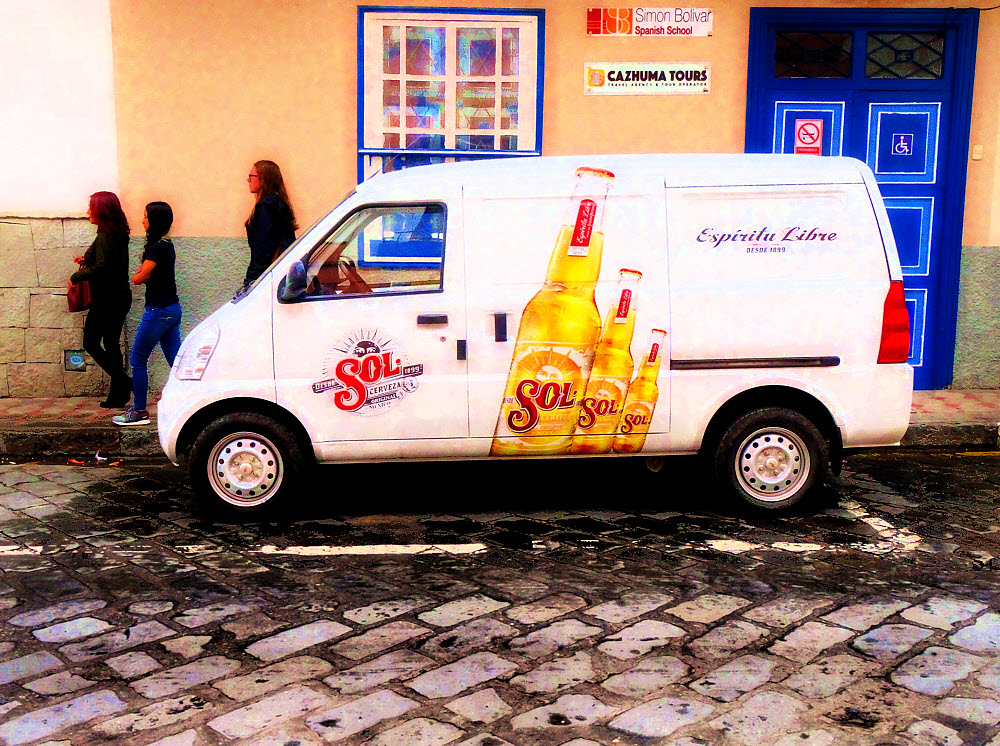
I did get in two nights in the backcountry last year (How pathetic is this?), one on the beach, and one along the, as they say, West Fork of the Lower Skokomish River. One night in my new Hennessy Hammock. One two-mile hike in, using my new self-made custom pack, then back out the next morning. Everything worked fine, especially my pack, which is the best one I've ever used, but the trip seemed only tedious and I don't know why.
One more try — back to Olympic National Park, to hike up the Elwha Valley, hit the Low Divide, loop around Kimta Peak and tromp along the Skyline Ridge Trail, coming back up the North Fork of the Quinault River, and back out along the Elwha.
Didn't even start. Couldn't face it. Got up in the morning all packed and permitted and everything, and zip. Diddly-poo. Nothing. Had the desire to do all this and many more things, but when it came time to put feet on the trail, I had no interest.
And the heat.
The heat and living in the car, driving all over hell and back just to get to a shower in the morning, get to the library when it opened, hide out there all day, safe inside the bubble of air conditioning, drive to the supermarket to buy food for the day, drive 25 or 30 miles back out into the forest to try sleeping in a baking hot car. All crap. All my fault and I'm still not sure about any of it.
June was bad. July was hell. Temperatures in the mid 90s almost every day. Completely unusual, completely unavoidable, relentless.
It got to me. I couldn't wait to get away again. Now I'm back in Ecuador and bored. It's nice here as always, but I am bored.
At least I missed the fire season way up north. Two months of rain, then three dry bitchen-furious-hot months, then the fires. Western Washington was blanketed by deep thick opaque clouds of smoke toward the end of summer, but at least I was gone by then. I did see some photos out of Seattle — smoke so thick that people could hardly see to cross the street. Dangerous to even breathe. But I was back in Ecuador by then. I was OK. At least, for once.
Things are decent here in lots of ways. I came back convinced that maybe I just wanted to be old and not bother with anything else ever again. Get up, shower, have lunch, walk for a while, dink with my laptop, catch a little TV news, whatever. Not worry. Not be anything. Now I'm not sure. I'm like that, still untethered, rattling around, distracted by the undisciplined marbles in my head. Now maybe I want to try everything over again yet one more time etcetera and so on nevermind.
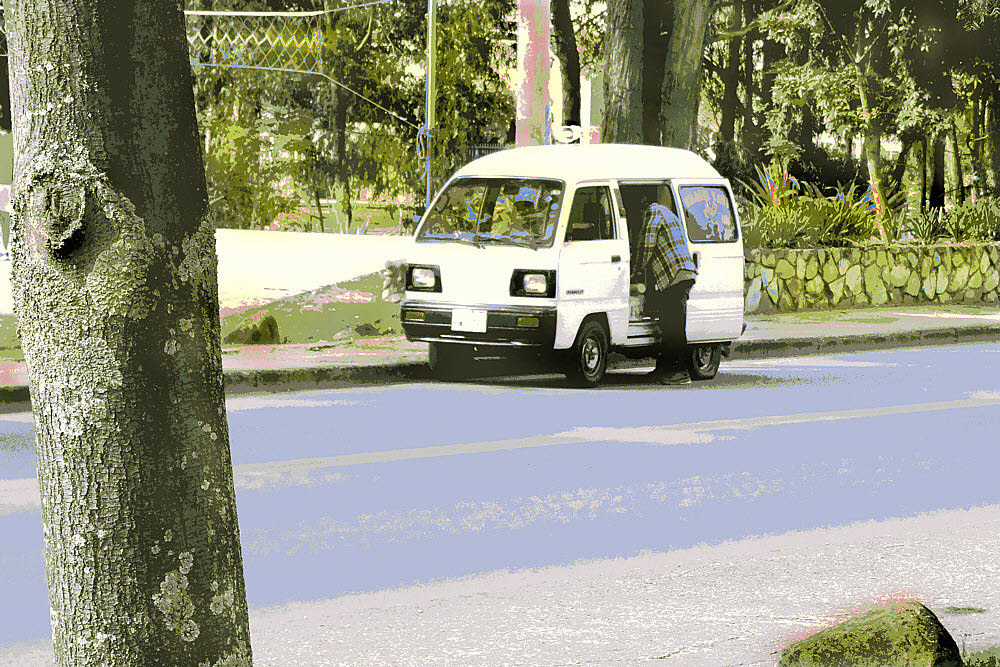
Pretend I'm 30 again and can make more huge wild leaps.
Now I'm almost convinced that it will be right this time if I plan it out. Could be. Could be? Really? No, no one knows nothing, least of all me.
The good news is that I can't, not now. I did promise to stay at least a year when reserving my apartment. That's through the end of August. And I don't have the cash saved yet anyway. It gets expensive buying a car every couple of years, driving it for a few months, and then selling it for half of what it's worth, even a used one. And air fare.
This is an expensive part of the world to get to, or to leave.
And if I do try roaming around again, what the hell am I going to buy? The only thing that makes sense is a cargo van. You can live in one. It's a box.
I did some looking once. Used, what you can get is 10 to 15 years old, has 150,000 to 250,000 miles on it, and tops out at 10 mpg in town or 13 on the highway, assuming that it won't break down before you get to the highway.
But one of those covers the bases. Park on any street and take a nap, have a bath, eliminate, change clothes, prepare and eat a meal, or all of the above, with privacy. No way to match this with a sedan, a hatchback, or an SUV. A minivan could be converted, maybe, after ripping out and discarding the seats, making it impossible ever to sell again.
Same (barely, maybe, possibly, who knows) with an SUV of the right type. Not too big, not too small, not too expensive. Not too much of anything good, or bad either. Not even a solution, just a compromising compromise.
I traveled just fine in my 1973 Toyota Corolla back in 1978. I worked with a guy who had bought a Volkswagen Bug in '57 and had removed the rear and passenger seats and replaced them with a plywood platform that he made. Brilliant. I copied that. Fantastic for traveling, especially back then. In 1978 I could travel for $10 a day, total. I can barely imagine what the western U.S. was like in 1957, but even in 1978 there was still lots of open country.
The conversion was easy too. The passenger seat and seatbelt came out after removing four bolts. The back seat bottom was fixed in place with two screws. Take those out, lift and pull in just the right way, then lift the rear seat-back off the two hooks holding it and you suddenly had your own version of the world's smallest RV. Whip something up from plywood and you could sleep in it and easily carry anything you needed. In addition to the trunk. Even more space there.
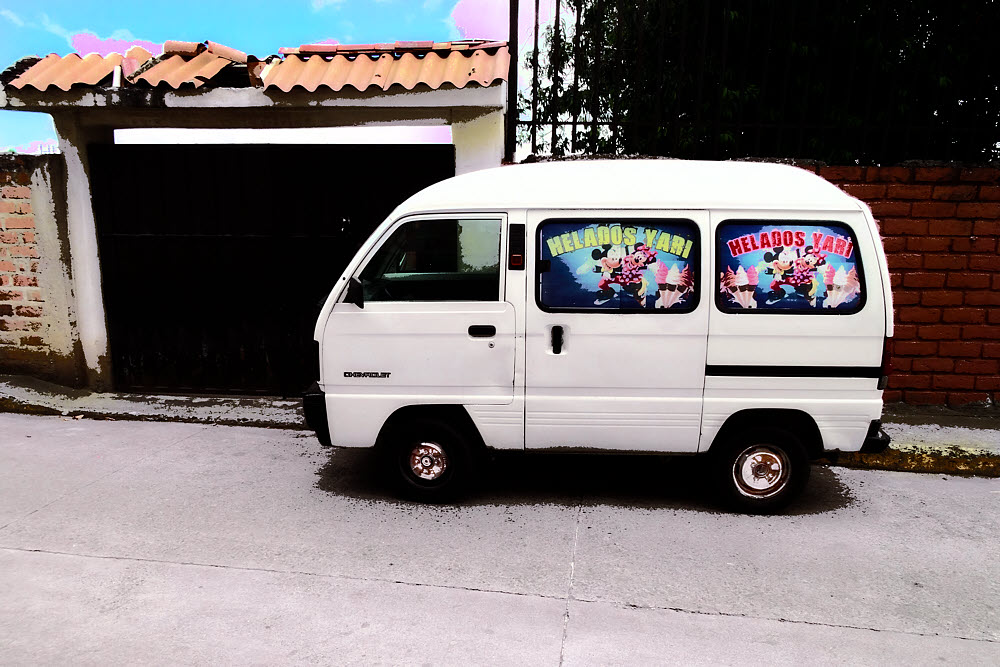
One night I pulled off the road near Point Reyes. It must have been just outside the town of Point Reyes Station, CA. There was a little cut in the side of the road and I drove off the pavement onto dirt, turned right, and stopped behind some trees, on a dirt track between them and the railroad tracks and stayed the night, no more than 100 feet from the highway, if that, in complete peace and solitude.
Another time in Oregon, it was getting late, and I simply drove off the highway and parked on the grass behind a guard rail no more than 50 feet off the pavement. It was quiet all night. No traffic. Gorgeous and quiet and simple and clean and unregulated in those days.
You can't do that now. Every small town has a traffic jam, even Libby, MT, last time I was there, in 1984 — about half a mile of bumpers and glare, crawling through the place on a shimmering-hot afternoon. The whole country is now full of hobby ranches and satellite housing developments and gates and fences. All the little turnouts and short stub roads leading nowhere are blocked or fenced or patrolled, but even a few decades ago things were really loose.
So assuming that I am really stupid, or desperate, or flat crazy, and I do head north again, and intend to really get it right this time, because it may be my last chance to have an adventure before my retinas rip loose or Mr Cancer finds my address, or I'm just too old to even come close to actually driving any more, then what? What kind of vehicle would work?
I already know the answer, and it is "Nothing you can get in the U.S." Makes me even more crazy than I usually am. I see them parked all over Cuenca or being driven around as if nothing, you know?
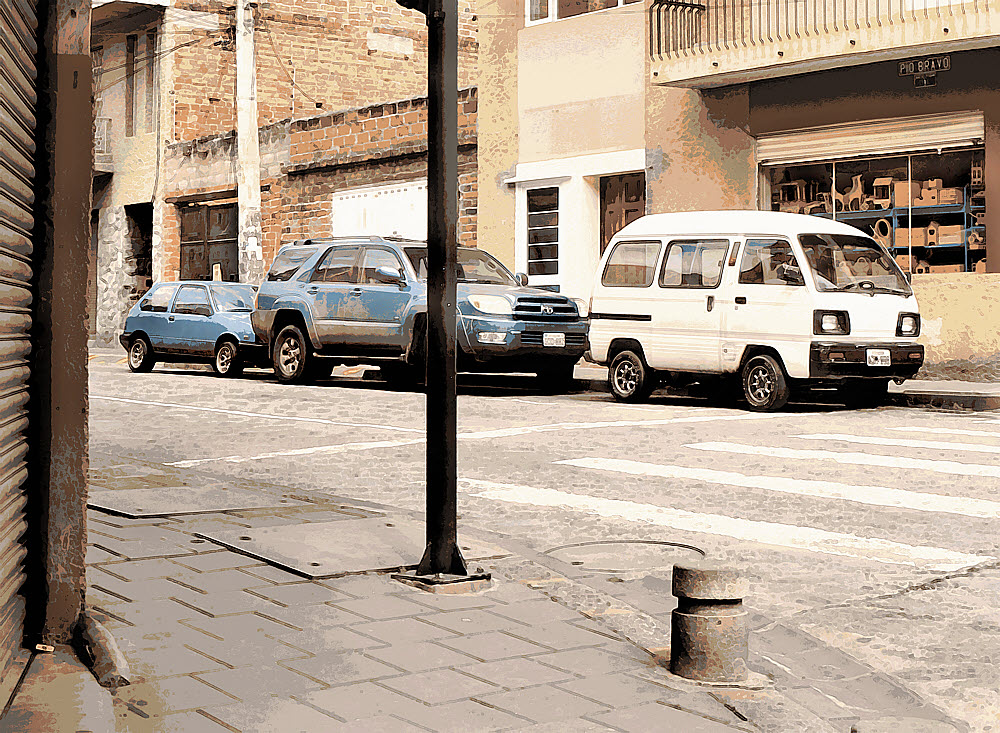
I think practically of what I could get, the best would likely be a Nissan Rogue. One of the "small" SUVs. After what research I did a year ago, it has the best compromise of an overall small size with relatively the most interior room, shortest wheelbase, most ground clearance, best mileage (considering), best reputation, smallest engine, most rational features.
While in for service, my Nissan Versa Note had to stay overnight, so they gave me a Rogue to take "home". It was so new and shiny that it still felt a little warm from the oven. Nice. Surprisingly, although it was bigger inside, it wasn't obviously bigger. It definitely did feel more massive. Give it gas when the light turns green and you first feel the vehicle hunch down and tighten all its muscles before beginning to move. Definitely heavier than what I was used to. Handled well. Stopped well, all that, but even as one of the smaller SUVs it seemed wasteful. I'd probably go totally nuts if stuck with a "full-sized" van.
Yeah right sure. Vans are available. Nissan makes a small one, and Ford too. Chevrolet used to sell a rebranded Nissan NV200, but no longer, so that leaves two maybe-affordable possibilities, but I could not spare months for slow shopping until a good used one appeared, so it would have to be new. So something new in the range of $27,000 to $32,000 after taxes, and then you've got a wide ungainly, relatively low-slung box that does not use fuel efficiently, and where can you go with that anyway?
Anything I got would require severe compromises.
Latin America is almost choked with small vans though. Stuff you'll never dream of seeing in the U.S. The tiniest one apparently hasn't been made since around 1989. See some of the photos here. That one was manufactured by Daihatsu, distributed by Suzuki, and sold as a Chevrolet. It had a 999cc three-cylinder engine and was barely large enough to jam four people into unless they were really good friends. It was superseded by a Chinese-made van that looks a lot better, sold as a Chevrolet N200. Beyond these, there are various oddball Citroën, Renault, Chery, Great Wall, Hyundai, Toyota, and who-knows-what vehicles banging around town here.
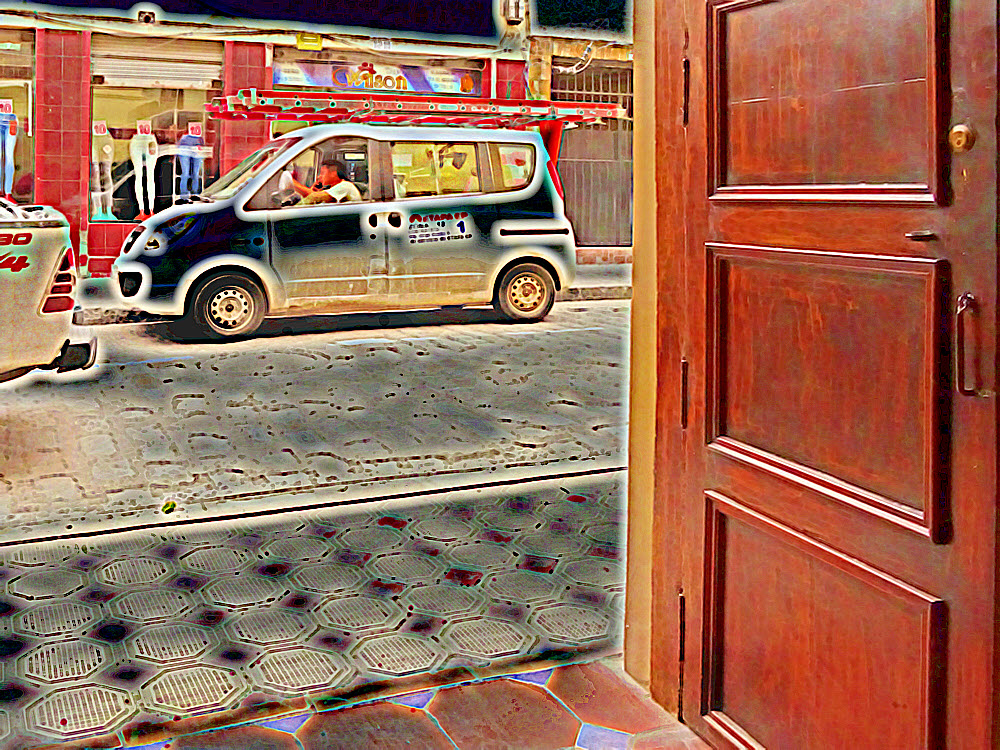
Enough to keep me thinking. To keep me stimulated. Maybe over-stimulated.
Having ideas isn't always good.
Having ideas isn't always good, but I can't stop walking and when I go out for a walk I get lots of ideas.
Christine the "German Tourist" is no help. No help on the large issue, logistics, which she says is the Big Critical Factor in all her travels. Nothing. No help on the "how to" part — how to get around all of Europe and the U.S. without a fixed home if in fact she does not have one, or her own transportation.
Cam Honan — same deal. The guy is all over and back and beyond but how does he do it? No clue. Not a single peep. Not a chirp, squeak, or twitter about it.
Sweetpea and Beardoh? Nope.
Ultrapedestrian? Nada. Don't bother even looking.
Blanks all over. "I went here and did this and it took six or eight or twelve months and next I'm going over there." But how? Backpacking trips are relatively easy compared to preparing for them and recovering after. What's hard is the big emptiness between them, when you have to be hanging out somewhere thinking and buying and getting mail and piling your goods on the floor and making repairs and laying out maps and just living.
Still clueless, I.
Whatever. Almost time for lunch. Maybe my kitty friend will be there napping in the shrubbery today. The cat knows things. My friend on the ground. We can talk.
I hope.
Info:
German Tourist aka Christine
Beardoh & Sweetpea
Cam Honan
UltraPedestrian blog
UltraPedestrian site
Hertz — Probably the best place to look for a used car. The New York area has the widest selection but there are locations all over.
A few thoughts on how not to effitup like I did:
- Have a definite set of plans, with realistic goals.
- Have a schedule.
- Have the right, tested equipment.
- Know where you're going and what it will be like when you get there.
- Know other people and stay connected to them.
- Ease into it, and readjust as needed early on.
- Have a real home you can return to and live in, or, if not, then
- Have a vehicle that holds everything so you can travel untethered.
- Have contingency plans and bailout options.
- Be prepared for each season and the changeover from one to the next.
- Have a decent setup for package delivery and mail forwarding to wherever you'll be.
And...I've got mail! How about that?
Matt S. 1:31 AM (6 hours ago)
Living between backpacking trips...
It's easy when you're connected. No getting bored when wife or kids want every last minute you'll give them. Leaves a LOT less room for backpacking.
Transportation ideas:
The NV200 idea isn't bad. Rather than buying new, get a friend (or random internet dude that won't stop pestering you via email) to pick one up for you. Ahead of the trip. There are plenty of options:
https://seattle.craigslist.org/search/sss?query=nv200&sort=rel&srchType=T
If you can impose upon that "friend" to sell it for you, you should be able to skate away from a summers use of the van for $3-4 thousand dollars (purchase cost + licensing + sales tax + repairs/maintenance - sale price).
Option Rent: rent a SUV from Enterprise for $200/week or $800/month. The cost of buy/sell a used van is ~ 5 months of rental. No buy and sell transactions, no sales tax (10%) hit, and no large capital outlay. I rented a Ford Expedition last year for a fossil and obsidian collecting family trip to Oregon. Needed extra seats because cousins joined us. Worked out great.
Since you mentioned spending $32k new, that kinda coin puts you into used Tesla Model S territory. Like this one:
https://seattle.craigslist.org/see/cto/d/marysville-2013-tesla-model-full/6784068113.html
Before you think I'm completely mad, google "tesla camping mode."
a) you aren't pressed for time, so waiting a little longer to "fill up" isn't an issue
b) we have loads of charging stations here in WA (even in the boonies)
c) electrons are 1/3 the price of dino juice and free at Tesla stations with some Tesla's (like the one above)
d) you can charge anywhere there's a 110V outlet
e) Tesla's have EXCELLENT resale value; the car will be worth nearly what you paid after the trip.
Matt
Dave sez...
Thanks. You're smart. You've done some serious thinking. I'll be digging through your suggestions for sure.
I did check on renting about 2 1/2 years ago. Budget Rent a Car had the lowest rates I could find, the base rate wasn't bad for a 3-month trip in the tiniest car they offered, but after adding in the taxes and various fees, it came to $1800 a month, and at the end you would have nothing but a receipt.
What I did last year and in 2016 was to rent a place for a week through Airbnb, which left about a 3 or 4 day window to get a mailing address, find a vehicle, get insurance, cut a check, travel to the dealer and do the deal. Hertz worked for me, but just getting from Olympia to either Burien or Beaverton can take a little tap dancing.
I might be out of the driving game before electric vehicles come into their own, but that would be my first choice for sure. Electricity is already available in more places than gasoline, just not in the right form. Every dealer has a charging station but as I remember when I looked up info a couple years ago, most of them take many many hours just so you can go another 100 - 150 miles.
The one question I'm still trying to answer is when you arrive at a trailhead for a week's backpacking, and your vehicle has everything you own inside it, then what? Even an armored car would never be 100% secure. Everything I own right now will fit into two duffel bags and a carry-on pack, but there are some things I can't afford to lose.
But anyhow, here's some random info that might be interesting:
- The Nissan Leaf Experiment: http://www.mrmoneymustache.com/the-nissan-leaf-experiment/
- Electric Car vs. Winter: http://www.mrmoneymustache.com/2017/10/06/electric-car-vs-winter/
- So I Bought an Electric Car...: http://www.mrmoneymustache.com/2016/10/04/so-i-bought-an-electric-car/
- 1400 Miles of Non-Driving in a Tesla: http://www.mrmoneymustache.com/2016/04/15/tesla-road-trip/
- Electric Vehicle Charging Station Locations: http://www.afdc.energy.gov/fuels/electricity_locations.html
- CarCharging: EV Charging Locations: http://www.carcharging.com/ev-drivers/locations/
- CarStations: Charging Stations: http://carstations.com/
- ChargeMap: community driven map: http://chargemap.com/
- Open Charge Map: http://openchargemap.org/site/
- ChargePoint: Electric Vehicle Charging Stations: http://www.chargepoint.com/
- PlugShare - EV Charging Station Map: http://www.plugshare.com/
- EVgo: Electric Vehicle Charging Stations: https://www.evgo.com/charging-locations/
Thanks again.
-- Dave
There are no affiliate links here. I do not need your money or have a desire to slime you.
Ideas to share? Send email to sosayseff@nullabigmail.com
See if that helps.


